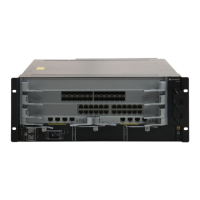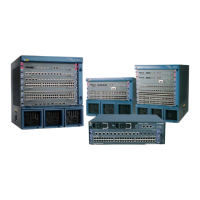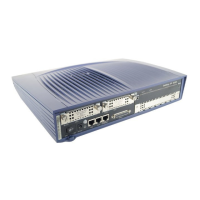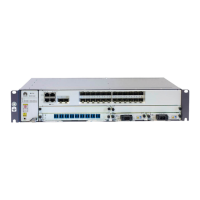Protection
Function
Scenario Configuration Impact
Loop
protection
A root port or an alternate
port will age if link
congestion or a one-way
link failure occurs. After
the root port ages, a
switching device may re-
select a root port
incorrectly and after the
alternate port ages, the port
enters the Forwarding
state. Loops may occur in
such a situation.
After loop protection is configured, if the
root port or alternate port does not receive
RST BPDUs from the upstream switching
device for a long time, the switching device
notifies the NMS that the port enters the
Discarding state. The blocked port remains
in the Blocked state and no longer forwards
packets. This prevents loops on the
network. The root port restores the
Forwarding state after receiving new
BPDUs.
8.2 Configuring Basic STP/RSTP Functions
STP/RSTP is used to block redundant links on the Layer 2 network and trim a network into a
loop-free tree topology.
STP/RSTP is commonly configured on a switching device to trim a ring network to a loop-free
network. STP/RSTP configurations on the switching device involve STP/RSTP working mode
configuration. If you need to interfere in the spanning tree calculation, the following methods
are available:
l Setting a priority for a switching device: The lower the numerical value, the higher the
priority of the switching device and the more likely the switching device becomes a root
bridge; the higher the numerical value, the lower the priority of the switching device and
the less likely that the switching device becomes a root bridge.
l Setting a path cost for a port: With the same calculation method, the lower the numerical
value, the smaller the cost of the path from the port to the root bridge and the more likely
the port becomes a root port; the higher the numerical value, the larger the cost of the path
from the port to the root bridge and the less likely that the port becomes a root port.
l Setting a priority for a port: The lower the numerical value, the more likely the port becomes
a designated port; the higher the numerical value, the less likely that the port becomes a
designated port.
8.2.1 Establishing the Configuration Task
Before configuring basic STP/RSTP functions, familiarize yourself with the applicable
environment, complete the pre-configuration tasks, and obtain the required data. This will help
you complete the configuration task quickly and accurately.
Applicable Environment
On a complex network, loops are inevitable. With the requirement for network redundancy
backup, network designers tend to deploy multiple physical links between two devices, one of
which is the master and the others are the backup. Loops are likely or bound to occur in such a
situation.
Quidway S7700 Smart Routing Switch
Configuration Guide - Ethernet 8 STP/RSTP Configuration
Issue 01 (2011-07-15) Huawei Proprietary and Confidential
Copyright © Huawei Technologies Co., Ltd.
388

